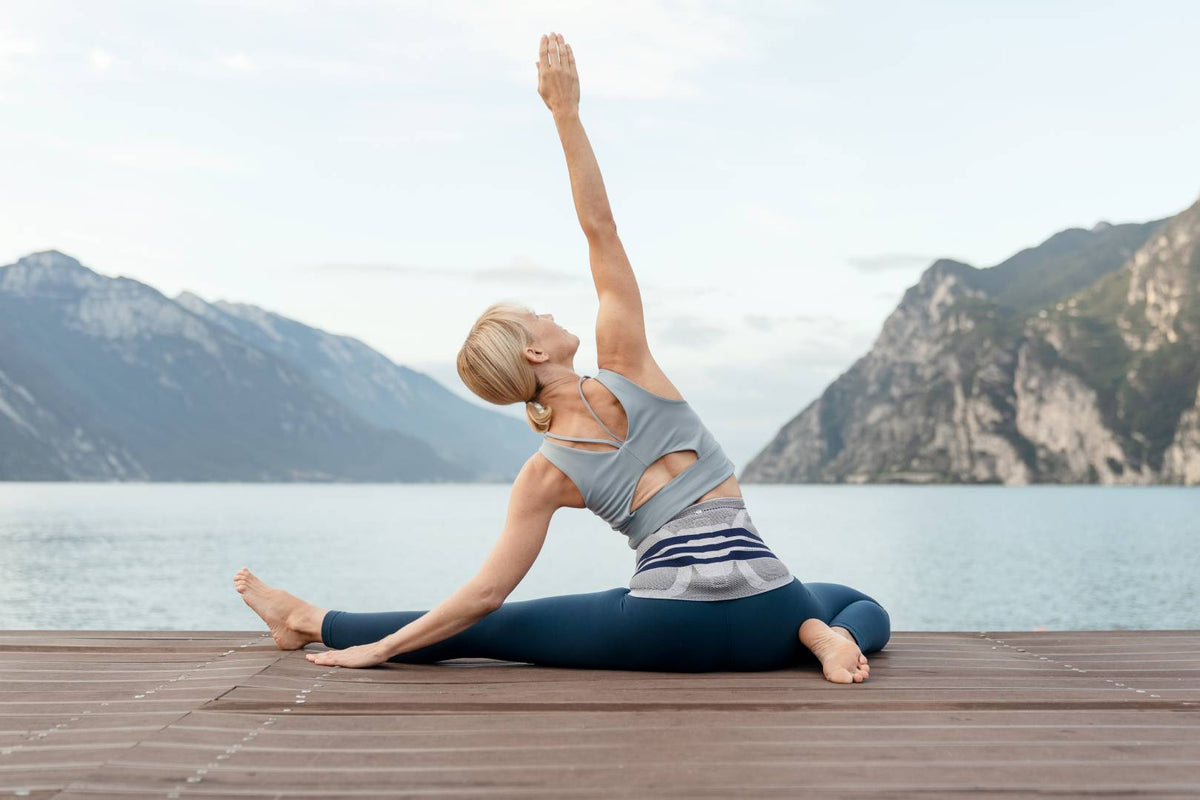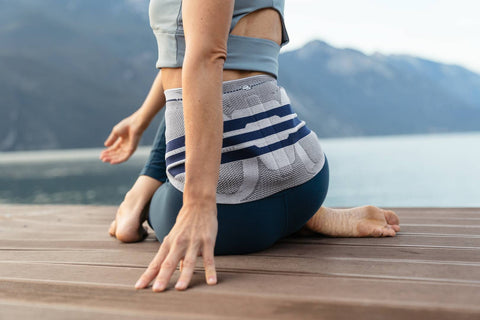Pain in Lower Back When Running? Here’s How to Fix It:

Running makes for fantastic cardio. But as you might have noticed, it can start turning your muscles and joints against you if you’re not careful. Among those affected is the back, and unlike the knees and feet, runners don’t often take precautions to protect it until it acts up enough to affect their routines. The good news is that back pain isn’t just a consequence of getting older. And if you’re experiencing pain in the lower back when running, there are ways to fix it.
What causes pain in the lower back when running?
Back pain doesn’t always have a clear cause. It can come on gradually or suddenly, with or without injury. If you’re wondering why your back starts hurting while you run, you likely fall into the latter camp. While we can’t tell you what’s causing your particular bout of back pain, we can go over some common causes:
- Tight paraspinal muscles. The paraspinal muscles are the large muscles running along either side of your spine. They’re responsible for keeping you upright and helping you bend and twist your back. As these muscles are pretty much always in use when you’re up and about, they’re quite prone to tightening up from overuse. Hence, running likely isn’t the sole cause of the tightness. But it can exacerbate it and cause painful spasms.
- Tight glutes and hamstrings. Now, the glutes and hammies are very prone to tightening when you run, especially if you increase your distance too fast or don't take the proper time to rest. Tightness in the glutes and hamstrings can throw off your gait and overall alignment, causing your paraspinal and surrounding back muscles to overcompensate.
- Joint dysfunction: your sacroiliac joints can also get irritated when you run due to the impact of your foot hitting the pavement. The impact can also transfer into your facet joints which control the movement of your vertebra, jolting them and causing irritation.
So, how do you go about fixing these issues?
How to get rid of lower back pain when running
Think ergonomically
Do you slouch when you sit? Is your mattress too hard or too soft? Do you lift with your back or legs? In all likelihood, running won’t be the only reason behind your back pain. Indeed, even facet and sacroiliac joint dysfunction can be attributed to long hours of slouching and lifting heavy loads wrong. Hence, it’s crucial to think holistically and ergonomically, as every little adjustment toward better posture and less back strain is another step toward better back health (and less back pain).
Strengthen and stretch your back and legs
As we mentioned, tight or weak glutes, hamstrings, and paraspinal muscles typically cause pain in the lower back when you run. The best way around this is by stretching and strengthening them, which you can do by adding these exercises into your workout routine:
- Kettlebell Squats, Planks, and Glute Bridges to strengthen your glutes, quads, and lower back.
- Downward Facing Dog to stretch your glutes, calves, and hamstrings. You can check out how to do this and other leg stretches in our leg day article.
- Child’s Pose to stretch and release your lower back.
Swap out your shoes
Worn-out running shoes and beat-up sneakers make for poor cushioning. While the cartilage and ligaments in your knees will take on the brunt of it, some shock will still be absorbed by your facet and sacroiliac joints, potentially agitating them and causing low back pain. That’s why many sports physios will tell you to get running shoes instead of regular sneakers and swap them out after every 500-800 kilometres you run, depending on your weight and preferred terrain. For extra protection, you can also try out some sports insoles. They’ll provide another layer of cushioning, help stabilise your ankles, and assist the natural ‘roll’ of your foot as you run.
Work on your form
- Make sure you land with your foot directly under your body. Quick strides with good impact distribution are easier on your knees and back than long, loping strides.
- When you land, aim for the midfoot rather than the heel.
- Look straight ahead. Keeping your eyes facing forward will help prevent your upper back from slouching forward and forcing your lower back muscles to compensate.
Let yourself rest and build distance gradually
Strenuous exercise creates microscopic tears in the muscle tissue and prompts your joints to adjust to the increased load. While this does build strength, it’s important to give your muscles, tendons, ligaments, and cartilage time to heal between runs. Taking on too much too fast interrupts the healing process, causing muscle tension and other unpleasant developments like tendonitis. That’s why experts also recommend gradually increasing distance in small increments. Specifically, 5-10% a week.
Brace against back pain
LumboTrain
A good back brace will act as a support and a mobility aid. Put simply, a compression back brace like our LumboTrain works by activating key muscle groups around your lumbar and hips, thus improving how they support your spine. Not to mention, bracing can help you manage back pain. Your spine will be under less pressure, your muscles will be less likely to tense up, and painful areas will be massaged and relieved by the sewn-in gel pads.
See a specialist
The lower back is a complex system of parts that’s under near-constant pressure. What might seem like a straightforward case of muscle tightness might have a more pressing underlying cause. Hence, it’s always in your best interest to seek advice from a physiotherapist or osteopath. They’ll be able to give you an accurate diagnosis and start helping you fix the issue through manual adjustments, myofascial massage, and targeted exercise sets.
TO SUM UP
The back is often overlooked when it comes to running protection, and back pain is often dismissed as just another thing to put up with as we get older. However, if you're experiencing back pain when running, there are concrete steps you can take to address it. Bracing, strengthening, stretching, the right gear, and seeing a specialist to rule out underlying medical causes will all go a long way in ensuring less painful runs.
See our full collection of running supports: Running Support Braces
More information
If you require assistance selecting the right product for your needs or wearing the brace, call us on 098015660 or contact us via live chat.
Do you have private health? Most private health extras will cover Bauerfeind Products. Check to see if yours is included. Bauerfeind Private Health Insurance Inquiry.
Bauerfeind was founded in 1929, and since then, we've worked tirelessly to develop and improve our extensive range of braces, insoles, and compression products. Our mission is to provide you with top-of-the-line supports so you can reach your fitness goals or live life without pain holding you back.
Every product is produced entirely in our facilities in Germany with the guidance of doctors, clinics, and orthopaedic technicians

